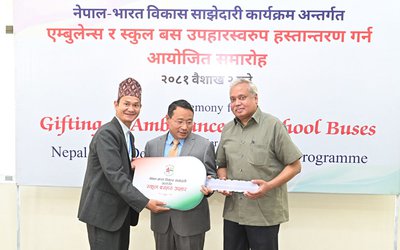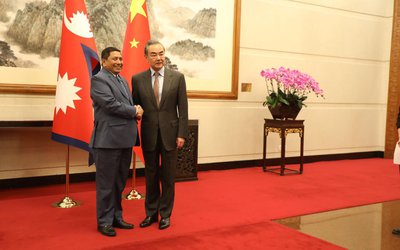
After two long days of meeting among experts, the National Development Council (NDC), the highest policy-level body in the country, has endorsed the much-awaited approach paper prepared for the development plan for the next three years, incorporating the inputs from different stakeholders.
Since the political change of 2006, this is the third 3-year interim plan passed by the NDC. Unlike previous two governments, the interim government led by Khil Raj Regmi took a great risk by presenting the development document.
Secretary at the National Planning Commission Yubaraj Bhushal took the initiative to prepare the document and newly appointed vice chairman of National Planning Commission Dr. Rabindra Kumar Shakya backed the efforts.
After the promulgation of the interim plan, Nepal has avoided a major gap in development process. Had there been a gap in the plan, Nepal would have to go through a long process of development instability, witnessing major problems in areas like foreign aid mobilization and launching development projects.
Prepared by the National Planning Commission (NPC), the approach paper for the 13th development plan, among others, envisages pushing Nepal to the status of developing county from the existing Least Developed Country (LDC) by 2022-- achieving an annual growth of six percent.
"This government's job is just to hold the free and fair elections. Its mandate does not include passing the three years’ interim plan," said a former vice chairman of National Planning Commission. "It should have been better to leave the country on a plan holiday."
However, experts say Nepal has to attain at least 7 percent annual growth to achieve the target. This year, the government expects only 3.6 percent growth owing to low capital spending and the poor performance of agriculture sector. To attain a six percent growth rate, the plan has focused on agricultural growth rate of 4.5 percent per annum till 2015/16. It has also set a target of attaining 6.7 percent growth rate per annum in non-agricultural sector till 2015/16.
These growth rates are expected to trigger employment growth rate of 3.2 percent per annum till 2015/16, while reducing population living below the poverty line to 18 percent. Effective mobilization of public sector, private sector and cooperatives are the major strategies to achieve the set targets. Development of physical infrastructure, expansion of social services, enhancement of good governance in public and other sectors, inclusive and sustainable development are the other priorities.
Similarly, development of hydropower and energy sectors, commercialization and diversification of agricultural sector, enhancement of farm productivity and increased access to basic education and health services, drinking water and sanitation, are also among the programs incorporated the approach paper. Plans to spend a total Rs 1.62 trillion till 2015/16 are formulated in the paper. Of this, Rs 960.69 billion rupees will be spent to cover recurrent expenses, while Rs 277.94 billion will be allocated for capital spending.
The expenses, according to the plan, would be met through estimated revenue collection of Rs 1.13 trillion in the three-year period, while the rest would be raised through domestic debt, and grants and loans from development partners.
- TANAHU HYDROPOWER PROEJCT: A Significant Achievement
- Apr 15, 2024
- AMBASSADOR HANAN GODAR: Sharing Pain With A Nepali Family
- Mar 30, 2024
- VISIT OF KfW AND EIB TO NEPAL : Mission Matters
- Mar 25, 2024
- NEPAL BRITAIN SOCIETY: Pratima Pande's Leadership
- Mar 24, 2024
- NEPAL ARMY DAY: Time To Recall Glory
- Mar 15, 2024
















